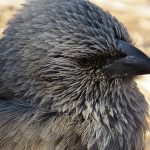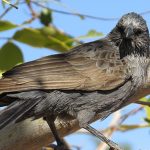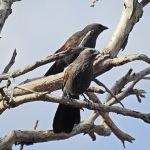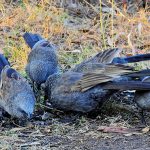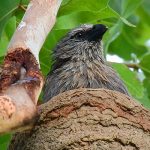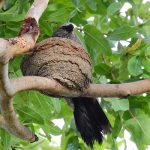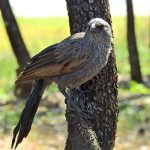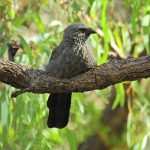APOSTLEBIRD
The Australian bushland often hums with the gentle chatter of flocks, but few are as sociable or intriguing as the Apostlebird. Often called the “grey jumper” due to their soft, slate-grey plumage and energetic movements, these birds are a marvel of cooperation and communal living in the wild.
Who Are the Apostlebirds?
Apostlebirds are medium-sized, ground-dwelling birds native to inland eastern and northern Australia. They’re part of the corvid family, making them relatives of the crows and ravens, but with a unique lifestyle and character all their own.
Multi-Sensory Description
Sight:
Picture a flock of about twelve dusky-grey birds, each about 30 cm long, bustling together across dry leaf litter. Their shaggy feathers and long, fluttering tails catch the sunlight in muted silver tones. Their expressive eyes are always alert, scanning for insects or seeds.
Sound:
The air fills with soft, musical contact calls and chattering trills, a continuous conversation that keeps the group connected as they forage.
Touch:
If you could reach out, their feathers would feel soft and downy, a practical design for insulation during cool inland mornings.
Smell:
The scent of warm earth and eucalyptus surrounds them as they move through light bushland, occasionally flicking aside the fallen leaves to uncover hidden grubs.
Social Life: Living in Groups
Apostlebirds are rarely alone. They live in tight-knit families or flocks, often described as ‘gangs’. The group size typically ranges from 6 to 12 members—hence the name “Apostlebird” after the twelve apostles in Christian tradition, though the number can vary.
Cooperative Behaviour
- Building Nests: The whole group helps build massive, mud-caked nests in tree forks, thick and sturdy enough to withstand both summer storms and hungry predators.
- Feeding Young: Not only parents but also older siblings and extended family members assist in feeding the chicks and keeping the nest safe.
- Foraging: Apostlebirds forage on the ground together, searching for insects, seeds, and fruit, always vigilant to warn each other of approaching danger.
Habitat and Distribution
- Where to Find Them: Open woodlands, dry forests, and the edges of farmland across Queensland, New South Wales, northern Victoria, and the eastern Northern Territory.
- Climate Adaptation: Their downy plumage provides insulation against fluctuating temperatures in Australia’s variable climate.
Conservation Insight
While Apostlebirds are not currently considered threatened, their future depends on the preservation of open woodlands and water sources. Habitat loss could endanger their unique social structures and way of life.
Why Are Apostlebirds Special?
- Remarkable teamwork showcases the importance of cooperation in the wild.
- Their constant communication and affectionate behaviour offer a window into the complexities of bird society.
- By maintaining healthy insect populations, they contribute to the balance of their ecosystems.
At a Glance: Apostlebird Facts
| Feature | Details |
|---|---|
| Scientific Name | Struthidea cinerea |
| Average Size | 28-33 cm |
| Habitat | Inland woodlands, scrub, farmlands |
| Diet | Insects, seeds, fruit |
| Social Structure | Cooperative flocks of 6–12+ |
Conclusion: The Spirit of Community
Apostlebirds remind us that strength often lies in unity. Their bustling, cheerful flocks filling the quiet bushlands are living testaments to cooperation and resilience, echoing through Australia’s heartlands. By protecting their habitats, we not only safeguard a unique species but also preserve the stories and bonds that keep their communities thriving.
Curiosity Sparked?
Next time you hear the gentle chattering deep in the woodlands, you might be listening to one of Australia’s great social wonders—the Apostlebird.


